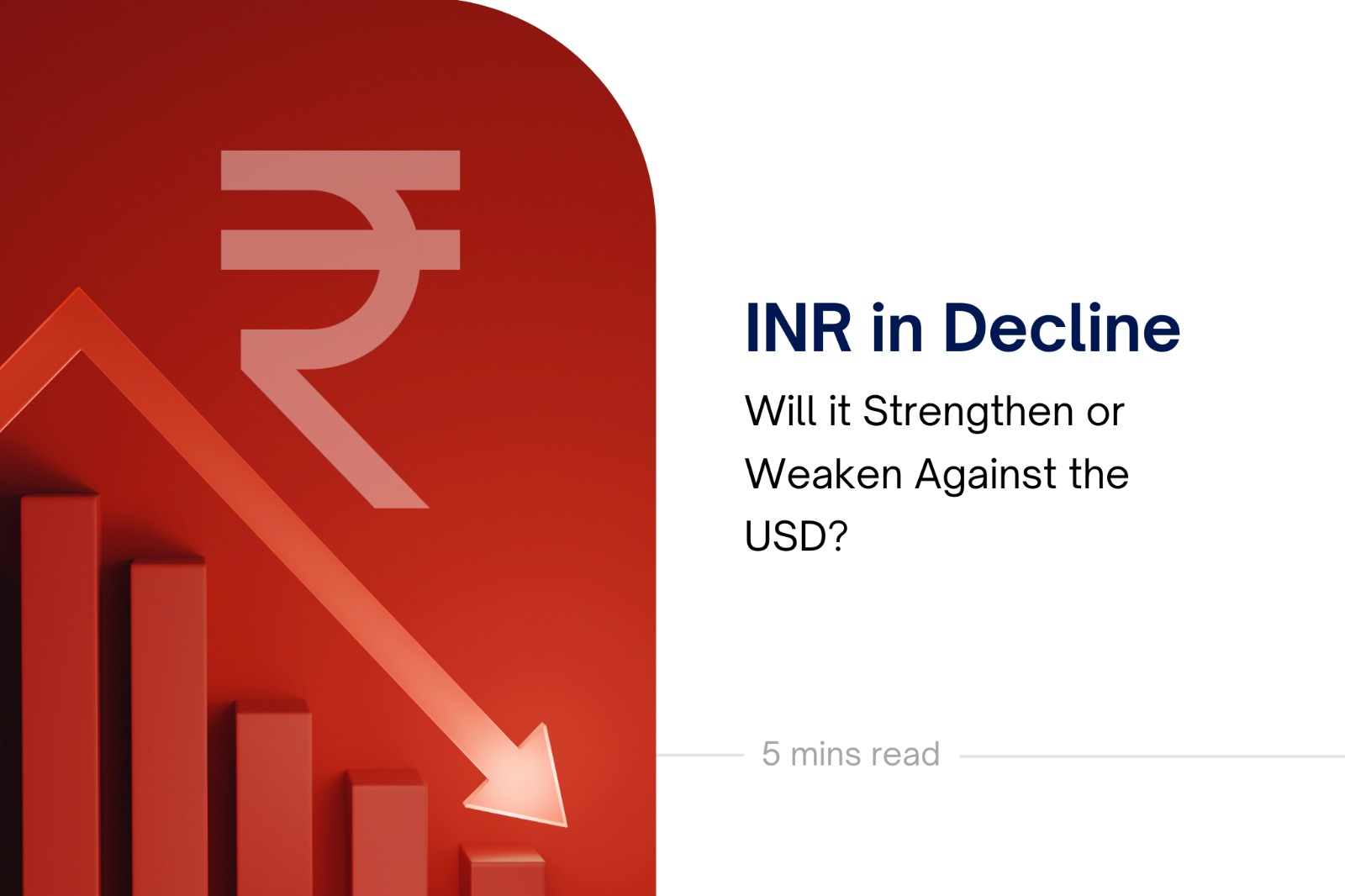
INR in Decline: Will it Strengthen or Weaken Against the USD?
Can you recall the exact price you paid for a product a decade ago?
How much has it changed, and why does it matter?
While there could be many reasons for that, one of the most definite reasons is that a strong dollar makes the INR weak and imports expensive, leading to higher inflation in India.
The current value of the INR against the USD changes everyday based on economic activities. The debate of the USD Vs. INR has been going on for ages. It has been an important topic of discussion for those who often travel and have to actively do currency exchanges.
Who else is it important for? For investors who want to make the most out of their bucks.
The INR in the recent past has fallen to the lowest of levels ever in history. In 2022, the rupee emerged as the poorest-performing currency in Asia, experiencing a decline of approximately 10% against the U.S. dollar.
This drop was primarily attributed to the strengthening of the U.S. currency, driven by its safe-haven appeal amid concerns about global recession, inflation, and the conflict between Russia and Ukraine.
At present in 2023, 1 USD = 83.13 Rupees.
Why exactly has the INR been falling against the USD?
The investor personality that prefers U.S. investments has dramatically increased its demand. Investors want to invest in a stable economy and the U.S. offers just that!
The macro-economic stability of the U.S. has attracted many investors from around the world, especially India. Macro-economic stability describes the stability of a country’s economy, where fluctuations in the economy is miniscule or absent. The U.S. has always had a stable output growth and stable inflation, making the country an attractive source for investors seeking safe investments.
What sets the U.S. apart, especially in the aftermath of the unforeseen pandemic is its ability to weather economic storms and provide a haven for risk-averse investors. The global financial landscape witnessed a paradigm shift as individuals and institutions alike sought investments capable of mitigating risk.
In this climate of uncertainty, the has U.S. emerged as a preferred destination for secure investments worldwide. Investors have increasingly turned to options within the U.S. market, drawn by the prospect of safeguarding their financial portfolios amidst turbulent times.
Contrary to pessimistic forecasts, the US economy defied expectations in 2023, with a projected growth of 2.6%, up from an initial estimate of negative 0.1%. Fuelled by strong consumer spending, a resurgence in manufacturing investments, and increased government purchases, the US real GDP surpassed pre-pandemic predictions. The robust household balance sheets and a thriving labour market were key drivers, sustaining consumer expenditures at levels seen in prior economic expansions.
What will be its impact on India and INR?
With more and more Indians preferring to opt to opt for the USD, emerging markets like India will take a hit. India being a risk associated country, INR value will significantly decline.
Currency Depreciation and Economic Risks: India, being perceived as a risk-associated country, is particularly vulnerable to the shift in investor preference towards safety-oriented instruments like the USD. This inclination towards a stronger and more stable currency results in a substantial decrease in demand for the INR. The consequence is a persistent depreciation of the INR against the USD, exposing the Indian economy to heightened volatility and economic risks.
Trade Dynamics and Inflationary Pressures: A weakened INR makes imports more expensive, contributing to higher inflation rates within India. This, in turn, affects the purchasing power of the general population and places additional strain on the domestic economy. Import-dependent sectors may experience challenges due to increased costs, potentially leading to trade imbalances and economic uncertainties.
Investor Confidence and Capital Outflows: The preference for USD over INR also signals a potential drain in investor confidence in the Indian market. As investors seek stability in the US, capital outflows from India may increase. This could impact domestic investment opportunities and hinder the growth prospects of various sectors.
The INR will continue to fall against the USD in the coming future.
As an investor, here’s what you can do to protect your investment interest:
- One key step to safeguard your investment interest is to convert INR into valuable assets. Holding large amounts of INR may expose your wealth to the risks associated with currency depreciation. Diversifying into assets such as real estate, precious metals, or stocks can act as a hedge against inflation and currency devaluation. This approach not only safeguards your capital but also provides the potential for growth over time.
- Investing in USD-denominated assets can be an effective way to shield your portfolio from the fluctuations of the Indian Rupee. The US Dollar is widely recognized as a stable and globally accepted currency, making it a preferred choice for investors seeking a safe haven. This can be achieved through various means, such as investing in US stocks, and real estate.
- Saving in USD is another strategic move to mitigate currency risks. By holding a portion of your savings in US Dollars, you insulate yourself from the potential devaluation of the INR. Additionally, it provides the flexibility to take advantage of international investment opportunities and facilitates ease of transactions in the global market.
With the shift in investor preferences towards the stable and resilient U.S. market, diversifying your portfolio into USD-denominated assets, can serve as an effective hedge against currency devaluation.
As the investment landscape evolves, proactive measures tailored to the changing currency dynamics can pave the way for a resilient and prosperous investments through portfolio diversification. Now is the right time to seize these strategies and position yourself for long-term financial success.
If you’re worried about where to start, reach out to Ashton Gray Investments, today! Explore lucrative U.S. real estate investment options to secure your financial future.
About Ashton Gray Investments
Ashton Gray is a vertically integrated real estate investment and development company that has created a competitive advantage that yields higher returns for its investors. With its proven 100% return on capital track record, Ashton Gray is a leader in the private equity real estate arena.




